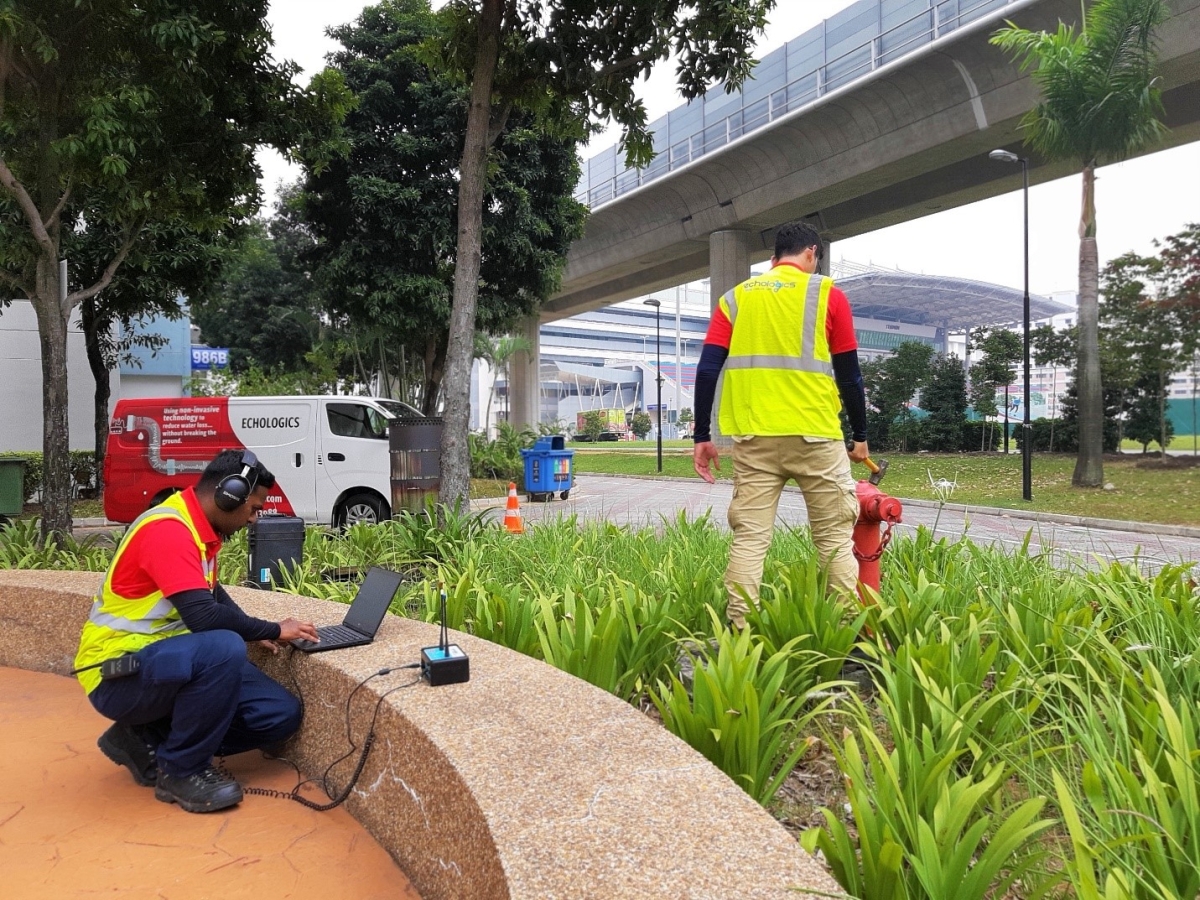Three Acoustic Technologies for Leak Detection and Pipe Assessment
Date:
Publication:

Water companies face a constant battle against leaks, ageing infrastructure, and the need for efficient asset management.
Acoustic technology is being successfully used in leak detection, pipe assessment, and continuous leak monitoring for decades. These technologies leverage advanced signal processing and machine learning, offering a proactive approach to managing water distribution networks. Let’s dive into three technologies that are achieving great results around the globe:
Pinpointing Leaks with Precision
The LeakFinder-ST™ system excels at accurately pinpointing leaks, even the quiet ones, minimising the need for exploratory excavations. Its user-friendly interface and rapid correlation time make it accessible to users without prior leak detection experience. A key innovation is the system’s ability to automatically estimate the speed of sound in water pipes, leading to precise leak localisation. This technology employs state-of-the-art electronics to enhance performance, particularly in detecting subtle leaks that might otherwise go unnoticed. The Windows-based software user interface makes is easy for anyone to use.
Assessing Pipe Condition Without Disruption
The ePulse® condition assessment technology offers a non-invasive method for evaluating the condition of both distribution and transmission mains. This technology identifies areas of concern without requiring large-scale excavations or service disruptions. It is able to provides pipe wall thickness measurements and is particularly useful where there may be different pipe materials, critical crossings, or where the condition of one pipe segment varies a lot. This flexibility allows utilities to tailor the assessment to their specific needs and prioritise areas requiring further investigation. ePulse works on a variety of pipe materials, including AC, CI, DI, steel, and PCCP.
Continuous Monitoring for Proactive Leak Management
The EchoShore® system provides continuous water leak monitoring through permanently installed sensors, offering early detection of leaks as they develop. This proactive approach enables utilities to engage the community, plan efficient repairs, and mitigate environmental risks. The system combines reliable hardware with sophisticated acoustic analysis and AI-driven leak flagging algorithms. The sensors are easy to install and maintain, and they can be deployed on fire hydrants and valves for comprehensive coverage. Leak alerts are delivered through the Sentryx™ Water Intelligence platform, with the option for open APIs for seamless integration into work order management systems. The system provides specific leak investigation recommendations, including location and progression, and a dedicated Echologics analyst who reviews the data to determine whether the persistent correlated noise (PCN) is actionable.
There are two versions – EchoShore-TX for monitoring larger transmission pipes 16 inches (400mm) and greater, and EchoShore-DXe for regular sized distribution lines.
The Underlying Technology: Acoustic Wave Propagation
All three technologies rely on acoustic sensors strategically placed at existing contact points within the water distribution network. These sensors capture the sound waves that travel along the pipes. By analysing the time it takes for the sound waves to travel between sensor stations, and understanding that the speed at which the sound wave travels is dictated by the condition of the pipe wall, these technologies can identify leaks, locate leaks and assess pipe condition. This innovative approach offers a powerful suite of tools for managing water infrastructure and reducing non-revenue water loss.
Water companies face a constant battle against leaks, ageing infrastructure, and the need for efficient asset management.
Acoustic technology is being successfully used in leak detection, pipe assessment, and continuous leak monitoring for decades. These technologies leverage advanced signal processing and machine learning, offering a proactive approach to managing water distribution networks. Let’s dive into three technologies that are achieving great results around the globe: